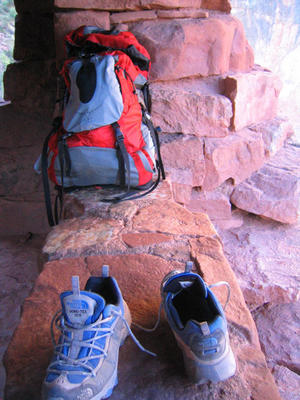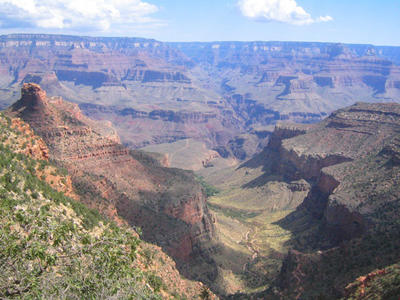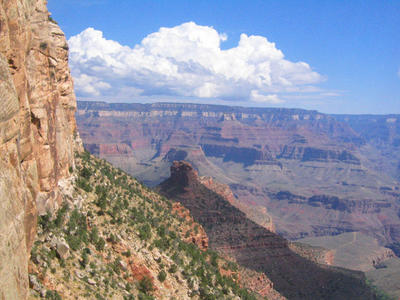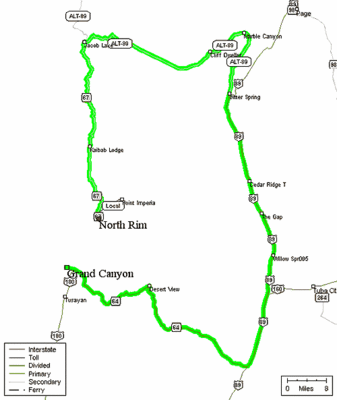Soft spots: College library
It’s a weird feeling to be missing a college library, and it didn't hit me until I was actually in one, after two and half years. I find it amusing that the study desks, nylon-covered chairs, and carpets looked exactly like the ones in my college library. Well they probably all bulk order from the same company. Even the smell of the soap in the Women’s bathroom makes me pause and reminisce. There is a certain level of comfort in hiding in the planks of a wooden desk in a corner of a giant maze of stacks and stacks of books. It’s quiet with a constant humdrum of the air conditioner and a low murmur. An occasional pencil drop or book shuffling punctuates the silence yet further accentuates the stillness of the place. Tonight I worked on my cover letter. I worked furiously on it for two and a half hours with no break. At times the air conditioner was a bit cold, and I thought to myself to bring a sweater next time. This thought brought chuckles as I thought of Felicity being called the “Sweater Queen” by her friends. Later I felt extremely thirsty but didn’t want to pack up my laptop, walk out of the maze and 3 minutes later walk back in. I made another mental note to bring bottled water tomorrow. Back in college, library was the ideal place to crash in between classes, to get together with friends in the reserved study room and chat the night away, to sit around packed tables and ogle over cute guys, and doing real work fell to the bottom of priorities. Tonight all of a sudden I discovered my amazing ability to concentrate for two and half hours on a piece of writing I am not particularly good at or interested in, but what's more surprising is that the prospect of tomorrow enticed me--how I will make my library experience more comfortable since I am in for the long haul. Or rather, living in the real world puts one into perspective.As I walked out of the front gate, the balmy autumn air enveloped me as flocks of students walked pass by in baggy sweatshirt, jeans and flipflops, cellphones clutched to the ear. I joined the crowd.
Soft spots: 最初的感动
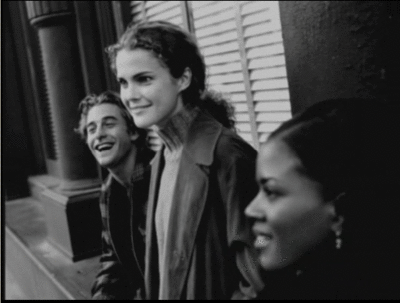 Friends 是一杯可口可乐,什么时候都可以喝,什么时候喝的味道都一样。九年之后,我只能说I am really tired of it.可是Felicity不一样,它是你在一家几千里外不知名的泰国餐厅的点的一杯Thai Ice Tea. 你永远记得第一口沁入心脾的感觉,但是就算你养成了每次去泰国餐厅必点Thai Ice Tea的习惯,却怎么也找不到那第一次的味道,以至于慢慢得你相信也许第一杯给你的印象不过是自己经过时间的沉淀的想象。18岁的她伴随 着我度过我的大学,我在一个陌生国度最初的最尴尬的四年。 在八年之后我再重新回顾它的时候, 感动我的还是那个18岁的女孩, 那个向世界宣布"Here is my new theory, no matter what, you can never be ashamed of the truth, never."的女孩。这句话在多年以后我终于听到了另一个人说,可是最初听到的时候,一种蓦然回首的déjà vu击中了我。 咀嚼这句话的的时候我终于明白了她,也明白了我的大学。但是电视就是电视,目的是收视率。我也意识到甚至在我最喜欢的第一季里都出现了情节的牵强附会。但是有多少电视剧是能让我感动的呢?哪怕只是一瞬间。
Friends 是一杯可口可乐,什么时候都可以喝,什么时候喝的味道都一样。九年之后,我只能说I am really tired of it.可是Felicity不一样,它是你在一家几千里外不知名的泰国餐厅的点的一杯Thai Ice Tea. 你永远记得第一口沁入心脾的感觉,但是就算你养成了每次去泰国餐厅必点Thai Ice Tea的习惯,却怎么也找不到那第一次的味道,以至于慢慢得你相信也许第一杯给你的印象不过是自己经过时间的沉淀的想象。18岁的她伴随 着我度过我的大学,我在一个陌生国度最初的最尴尬的四年。 在八年之后我再重新回顾它的时候, 感动我的还是那个18岁的女孩, 那个向世界宣布"Here is my new theory, no matter what, you can never be ashamed of the truth, never."的女孩。这句话在多年以后我终于听到了另一个人说,可是最初听到的时候,一种蓦然回首的déjà vu击中了我。 咀嚼这句话的的时候我终于明白了她,也明白了我的大学。但是电视就是电视,目的是收视率。我也意识到甚至在我最喜欢的第一季里都出现了情节的牵强附会。但是有多少电视剧是能让我感动的呢?哪怕只是一瞬间。
Books: The rule of four
The Rule of Four by Ian Caldwell and Dustin Thomason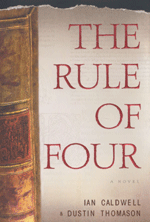 It's too bad that this book was constantly compared to the Da Vinci Code, not that the Da Vinci Code isn't good or anything. They excite readers in different ways. Contrary to solve-the-mystery-or-you-will-die premises, the decoding of the prized book Hypnerotomachia Poliphil in the Rule of Four is a thread that interweaves the characters and events of a journey, Tom's coming of age and coming to terms with his past, much more than that of an ancient secret to be revealed, innocent lives to be spared or grave consequences to be faced with. I enjoyed very much all the tidbits of the Princeton campus, Nude Olympics, the ancient and well preserved rituals of bidding for an eating club, dorm life, college romance and all that. The opening paragraph captured it so well I literally felt my heart twitch in a yearning for years past that will never return. “Strange thing, time. It weighs most on those who have it least. Nothing is lighter than being young with the world on your shoulders; it gives you a feeling of possibility so seductive, you know there must be something more important you could be doing than studying for exams”My favorite character is Paul, although the book seems to put Tom, the first person protagonist front and center. Charlie is everything good embodied in flesh and it feels unreal. And Gill. Gill has some major issues, and the authors were cruel not to give him a second chance for redemption, in my opinion. Paul is relentlessly wading through a dark tunnel alone, trapped, enchanted, discouraged, but never distracted. His intellectual capacity also amazes me—I mean obviously the authors were behind this, so they decoded Hypnerotomachia Poliphil supposedly. Paul was depecited brilliant, sharp, organized and soooo articulate and eloquent. How does a 22-year old do that? I often wonder is there any real purpose for imposing Gen-ed classes on people like Paul, even in Princeton? It will just be a waste of time for anyone THIS focused.Romance between Katie and Tom is tepid at best, and unfinished. The ups and downs of their relationship present a tcontrast that's too sharp to illicit real sympathy from the readers (e.g. me). It feels like a well rehearsed musical played one too many times. Everything was done exactly right---acting, stage and costumes are brilliant, yet the true emotion and poignancy was lost in the formality of things. It did serve its purpose though, to act like yet another hurdle Tom has to jump to reach his final awakening. But that is just it. I almost felt as though the authors have intended to focus on Tom initially, but during the creative process of fleshing it out, the personal charisma of Paul was turning up so overwhelmingly the direction was altered unexpectedly.
It's too bad that this book was constantly compared to the Da Vinci Code, not that the Da Vinci Code isn't good or anything. They excite readers in different ways. Contrary to solve-the-mystery-or-you-will-die premises, the decoding of the prized book Hypnerotomachia Poliphil in the Rule of Four is a thread that interweaves the characters and events of a journey, Tom's coming of age and coming to terms with his past, much more than that of an ancient secret to be revealed, innocent lives to be spared or grave consequences to be faced with. I enjoyed very much all the tidbits of the Princeton campus, Nude Olympics, the ancient and well preserved rituals of bidding for an eating club, dorm life, college romance and all that. The opening paragraph captured it so well I literally felt my heart twitch in a yearning for years past that will never return. “Strange thing, time. It weighs most on those who have it least. Nothing is lighter than being young with the world on your shoulders; it gives you a feeling of possibility so seductive, you know there must be something more important you could be doing than studying for exams”My favorite character is Paul, although the book seems to put Tom, the first person protagonist front and center. Charlie is everything good embodied in flesh and it feels unreal. And Gill. Gill has some major issues, and the authors were cruel not to give him a second chance for redemption, in my opinion. Paul is relentlessly wading through a dark tunnel alone, trapped, enchanted, discouraged, but never distracted. His intellectual capacity also amazes me—I mean obviously the authors were behind this, so they decoded Hypnerotomachia Poliphil supposedly. Paul was depecited brilliant, sharp, organized and soooo articulate and eloquent. How does a 22-year old do that? I often wonder is there any real purpose for imposing Gen-ed classes on people like Paul, even in Princeton? It will just be a waste of time for anyone THIS focused.Romance between Katie and Tom is tepid at best, and unfinished. The ups and downs of their relationship present a tcontrast that's too sharp to illicit real sympathy from the readers (e.g. me). It feels like a well rehearsed musical played one too many times. Everything was done exactly right---acting, stage and costumes are brilliant, yet the true emotion and poignancy was lost in the formality of things. It did serve its purpose though, to act like yet another hurdle Tom has to jump to reach his final awakening. But that is just it. I almost felt as though the authors have intended to focus on Tom initially, but during the creative process of fleshing it out, the personal charisma of Paul was turning up so overwhelmingly the direction was altered unexpectedly.Labels: books
Books: Interpreter of Maladies
 A Temporary Matter When Mr. Pirzada came to dine Interpreter of maladies A real Durwan Sexy Mrs. Sen’s This blessed house The treatment of Bibi Haldar The third and the final continentMy favorite story is Mrs. Sen's. The author writes with such simple yet elegant choice of language, descriptive yet cool with detached emotions. The pages are full of sensual details of Indian culture, tantalizing every sense. I could imagine myself at the center of action, the spice markets' array of colorful and effortlessly coordinated spice display, large blades being sharpened, loud laughter and chattering of the women who sat in a circle on the rooftop, chopping 50 kilos of vegetables into the night, the flapping sound of a fish struggling about in a bucket, next to it a sleepy shop keeper smoking a cigarettes and listening to the crackling sound from an old radio, and yum… delicious scent from every house in the evening. It made me terribly homesick even. The author did such a great job depicting the life in Calcutta, India, it was no wonder that the main character, Mrs. Sen misses home so much, and being alone in a strange American town with a husband who is working almost all the time further propels her into deeper desperation and loneliness. The story was told from an 11-year-old Caucasian boy’s point of view. An excellent choice, I must say. Everything was seen, heard, touched and experienced by Eliot, yet the life experience of an 11-year-olds living in the American suburbs and the interpretations he arrives only seem to be widening the gap between Mrs. Sen and her new perfect world. Sadly it will never change.
A Temporary Matter When Mr. Pirzada came to dine Interpreter of maladies A real Durwan Sexy Mrs. Sen’s This blessed house The treatment of Bibi Haldar The third and the final continentMy favorite story is Mrs. Sen's. The author writes with such simple yet elegant choice of language, descriptive yet cool with detached emotions. The pages are full of sensual details of Indian culture, tantalizing every sense. I could imagine myself at the center of action, the spice markets' array of colorful and effortlessly coordinated spice display, large blades being sharpened, loud laughter and chattering of the women who sat in a circle on the rooftop, chopping 50 kilos of vegetables into the night, the flapping sound of a fish struggling about in a bucket, next to it a sleepy shop keeper smoking a cigarettes and listening to the crackling sound from an old radio, and yum… delicious scent from every house in the evening. It made me terribly homesick even. The author did such a great job depicting the life in Calcutta, India, it was no wonder that the main character, Mrs. Sen misses home so much, and being alone in a strange American town with a husband who is working almost all the time further propels her into deeper desperation and loneliness. The story was told from an 11-year-old Caucasian boy’s point of view. An excellent choice, I must say. Everything was seen, heard, touched and experienced by Eliot, yet the life experience of an 11-year-olds living in the American suburbs and the interpretations he arrives only seem to be widening the gap between Mrs. Sen and her new perfect world. Sadly it will never change.Labels: books
Books: An affair with Agatha
Sad Cypress, Evil under the Sun, Death on the Nile, by Agatha Christie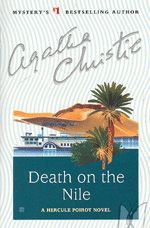
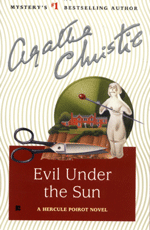
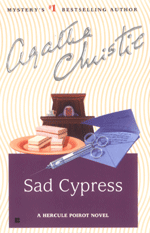 Holding my breath until the very last few pages of an Agatha Christie's book in one straight sitting was something I often did in college and a wonderful experience I most relish. Not all of them were pleasant. For example, once I was reading And Then There were None, the best psychological thriller I've ever read, clumsily adapted by countless copycats in both the literary world and Hollywood, I just couldn't, although very exhausted I was, go to bed. A fear seized me, so dark, so gripping, like a monster hiding in the dark, ready to pounce on me any minute. I was spellbound and glued to my seat. Almost in a trance, my conscience kept telling me to break away, but I just couldn't put down the book for good. I had to wake up my dear old roommate, who grudgingly stayed awake while I hurriedly finished the book.In my early days of reading Agatha Christie, I tried many times to beat her to the punch, trying to solve the mystery before the end of the book. All of them failed parlously needless to say. That's why I was so very moved by Paul in the Rule of Four. Of course, her works, as fine as they were, cannot compare to the Hypnerotomachia Poliphil in terms of complexity in the deliberate riddles and codes the author employed in guarding the remaining wealth of the entire western civilization. However, Paul's curiosity, devotion and the drive brought back fond memories of my own youth. I used to clear up my desk, take notes page by page, chart family trees, make diagrams for seating arrangements or that of the murder scene, and even go so far as to writing down all the clues and assign them to individual characters. I would talk in length to anyone who would listen about my theories, assumptions, hidden connections among characters. But mostly it's a one-person job for my roommate got tired of my raves and rants pretty fast and threatened to reveal the ending if I didn’t carry out my "second hand detective work" elsewhere… A book usually took me about a week, sometimes two weeks to finish. Like I said I never succeeded and I was always wrong in guessing whodunit. However my favorite time was always when Piorot ties the loose end in long monologues, when the truth was revealed and every clue was placed in its proper place and time. I often read these pages and reviewed my notes at the same time. Viola! I felt as though somehow I participated in Poirot or Marple's investigation and I, too enjoy the victory like a delicious ice cream cone.Once too frustrated with my own failures, I did the unthinkable. I flipped to the very last page of The Murder on the Orient Express, and quickly cast a glance at a character to which Poirot said something equivalent to that of "I knew you did it". I started working backwards, still maintaining my meticulous ways of charting, noting and diagramming, hoping to see a clear path pointing to this unlikely suspect. Thinking I finally figured it out, I read on to the last few pages. As you can imagine, how disappointed I was. I was wrong again!I remain a faithful reader of Agatha Christie after college. I tried to read one or two of her books every year although I no longer have the time and patience to get so involved in "solving" the case. I love the ways she always instill complex traits to her characters, yet at same time they are all human with flaws. My diligent research told me, it's never what meets the eye, and that every clue serves its purpose. I have to say, my skills in documenting clues were unparallel, but it's the "threading" that is always challenging. How do they fit into a character's sequence of actions? With crossing timelines and multiple characters cast in suspicious lights, it's nearly impossible.Evil under the Sun totally caught me by surprise, leaving me the all-too-familiar rug-pulled-under-you kind of feeling. But afterwards, I did think there was a faint recollection of a somewhat similar plot in Death on the Nile in obscuring the exact time of murder. I also felt I have gradually become better, or shall I say, more familiar with Agatha's bag of tricks. My success with Sad Cypress is one prime example. An illegitimate child and the weird incident of Mary being persuaded to draft her own will are two important clues I held on to, never letting other sprinkled clues influence me otherwise. My instinct was correct, although she still threw in road blocks to cloud my judgment. A new sense of appreciation grew for Agatha Christie as she also exemplifies her forte in writing court room drama with such brutal force and legal precision, as seen in the wonderful To Kill a Mockingbird. Furthermore I never cease to amaze at her ability to bring our essence of a character by just a few random comments made by other irrelevant characters. For example, in describing one of the gossipy nurses, O'Brien, Dr. Lord said, "… harmless. She doesn't lie but has the tendency to stretch the truth to make a good story." Dead-on impression of a village gossiper! Bravo.
Holding my breath until the very last few pages of an Agatha Christie's book in one straight sitting was something I often did in college and a wonderful experience I most relish. Not all of them were pleasant. For example, once I was reading And Then There were None, the best psychological thriller I've ever read, clumsily adapted by countless copycats in both the literary world and Hollywood, I just couldn't, although very exhausted I was, go to bed. A fear seized me, so dark, so gripping, like a monster hiding in the dark, ready to pounce on me any minute. I was spellbound and glued to my seat. Almost in a trance, my conscience kept telling me to break away, but I just couldn't put down the book for good. I had to wake up my dear old roommate, who grudgingly stayed awake while I hurriedly finished the book.In my early days of reading Agatha Christie, I tried many times to beat her to the punch, trying to solve the mystery before the end of the book. All of them failed parlously needless to say. That's why I was so very moved by Paul in the Rule of Four. Of course, her works, as fine as they were, cannot compare to the Hypnerotomachia Poliphil in terms of complexity in the deliberate riddles and codes the author employed in guarding the remaining wealth of the entire western civilization. However, Paul's curiosity, devotion and the drive brought back fond memories of my own youth. I used to clear up my desk, take notes page by page, chart family trees, make diagrams for seating arrangements or that of the murder scene, and even go so far as to writing down all the clues and assign them to individual characters. I would talk in length to anyone who would listen about my theories, assumptions, hidden connections among characters. But mostly it's a one-person job for my roommate got tired of my raves and rants pretty fast and threatened to reveal the ending if I didn’t carry out my "second hand detective work" elsewhere… A book usually took me about a week, sometimes two weeks to finish. Like I said I never succeeded and I was always wrong in guessing whodunit. However my favorite time was always when Piorot ties the loose end in long monologues, when the truth was revealed and every clue was placed in its proper place and time. I often read these pages and reviewed my notes at the same time. Viola! I felt as though somehow I participated in Poirot or Marple's investigation and I, too enjoy the victory like a delicious ice cream cone.Once too frustrated with my own failures, I did the unthinkable. I flipped to the very last page of The Murder on the Orient Express, and quickly cast a glance at a character to which Poirot said something equivalent to that of "I knew you did it". I started working backwards, still maintaining my meticulous ways of charting, noting and diagramming, hoping to see a clear path pointing to this unlikely suspect. Thinking I finally figured it out, I read on to the last few pages. As you can imagine, how disappointed I was. I was wrong again!I remain a faithful reader of Agatha Christie after college. I tried to read one or two of her books every year although I no longer have the time and patience to get so involved in "solving" the case. I love the ways she always instill complex traits to her characters, yet at same time they are all human with flaws. My diligent research told me, it's never what meets the eye, and that every clue serves its purpose. I have to say, my skills in documenting clues were unparallel, but it's the "threading" that is always challenging. How do they fit into a character's sequence of actions? With crossing timelines and multiple characters cast in suspicious lights, it's nearly impossible.Evil under the Sun totally caught me by surprise, leaving me the all-too-familiar rug-pulled-under-you kind of feeling. But afterwards, I did think there was a faint recollection of a somewhat similar plot in Death on the Nile in obscuring the exact time of murder. I also felt I have gradually become better, or shall I say, more familiar with Agatha's bag of tricks. My success with Sad Cypress is one prime example. An illegitimate child and the weird incident of Mary being persuaded to draft her own will are two important clues I held on to, never letting other sprinkled clues influence me otherwise. My instinct was correct, although she still threw in road blocks to cloud my judgment. A new sense of appreciation grew for Agatha Christie as she also exemplifies her forte in writing court room drama with such brutal force and legal precision, as seen in the wonderful To Kill a Mockingbird. Furthermore I never cease to amaze at her ability to bring our essence of a character by just a few random comments made by other irrelevant characters. For example, in describing one of the gossipy nurses, O'Brien, Dr. Lord said, "… harmless. She doesn't lie but has the tendency to stretch the truth to make a good story." Dead-on impression of a village gossiper! Bravo.Labels: books
Movies: 最近看的电影
李扬:盲井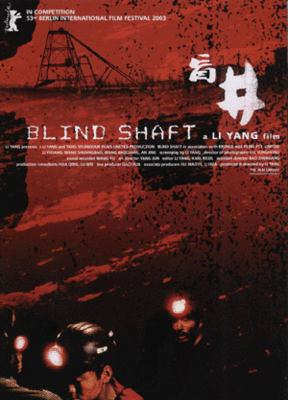 看了盲井才明白冯小刚的天下无贼不过是博人一笑。觉得心很痛,但是又能怎么样? 这种高度纪实的片子总是让我感到难受,不仅仅是同情剧中人物的经历,更是觉得自己慢慢得在脱离中国这个大时代了,不断反思中却又得不出结论。金基德:空房间
看了盲井才明白冯小刚的天下无贼不过是博人一笑。觉得心很痛,但是又能怎么样? 这种高度纪实的片子总是让我感到难受,不仅仅是同情剧中人物的经历,更是觉得自己慢慢得在脱离中国这个大时代了,不断反思中却又得不出结论。金基德:空房间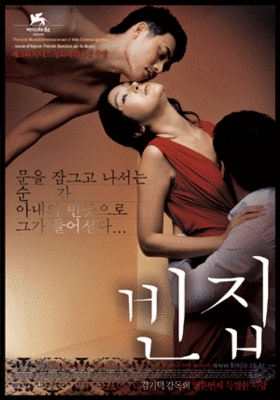 不 知道是哪个混蛋把这个片子翻译成空房诱奸,所以一直没看。金去年一举拿了三个大奖,这部作品应该是他的巅峰期的标志。惊喜地发现金的这个片子和阿莫多瓦的 all about my mother还有talk to her 风格有点类似,温情脉脉,又暗流汹涌,我很喜欢。朴赞旭:老男孩
不 知道是哪个混蛋把这个片子翻译成空房诱奸,所以一直没看。金去年一举拿了三个大奖,这部作品应该是他的巅峰期的标志。惊喜地发现金的这个片子和阿莫多瓦的 all about my mother还有talk to her 风格有点类似,温情脉脉,又暗流汹涌,我很喜欢。朴赞旭:老男孩 韩 国片里我向来喜欢生活气息浓厚的电影,比如八月照相馆,特别的人等等。没看之前我以为这是一个像Wonder Boys类似的故事。但是我实在太惊讶了,这个片子可以说是开创了暴力片的新天地,很多血性暴力的镜头都非常有创意,节奏鲜明,所有的感官都来不及反应一 波一波的冲击。音乐,摄影,剪辑也非常出色。
韩 国片里我向来喜欢生活气息浓厚的电影,比如八月照相馆,特别的人等等。没看之前我以为这是一个像Wonder Boys类似的故事。但是我实在太惊讶了,这个片子可以说是开创了暴力片的新天地,很多血性暴力的镜头都非常有创意,节奏鲜明,所有的感官都来不及反应一 波一波的冲击。音乐,摄影,剪辑也非常出色。
Books: Too cool for school

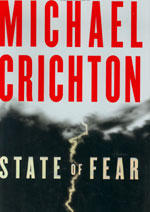 Although Amazon's annoying "Customers who bought State of Fear also bought London Bridges" seems to indicate there was some similarity between the two, they really don't come hand in hand on just about any aspect. In fact it was by pure accident that I stumbled upon the two books around the same time, but seriously, James, you should spend some time alone, think about what makes a good thriller, instead of popping out more books by the clock.Reading London Bridges was entirely a depressing experience that had no surprises no uplifting moments. It was pretty much downhill from the very beginning. The mastermind, the Wolf, knows everything about everything, and has connections everywhere. He could get the President of the United States on the phone with a finger snap, shoot the FBI director at point-blank range, blow up Paris from thousands of miles away. He's got FBI, CIA and every secret service in the world on his back yet he gets to do whatever the hell he wants to. The entire plot progresses by the increasing success of the Wolf and the Weasle, with no failure record. Alex Cross, a FBI agent with emotional and commitment problems trails behind the Wolf, always one step behind and one minute too late. I mean I do get a kick out of Patterson's mocking the US government and the FBI's incompetence in managing global crisis, but enough is enough. The book is a page-turner only in the sense that I turn the page with faint hope that the imbeciles will get at least one thing right, but oh no, never. On the contrary, reading State of Fear is indeed like riding a techno-thriller roller coaster, as promised. The book has its downside. Crichton tries to pack as many mini-lectures on climate and eco-myths in between the life threatening adventures, which slows down the pace significantly. I actually found myself enjoying hearing what Dr. Crichton's had to say about the widely-accepted theories on global warming, and it's even more refreshing to look at the subtle and not-so-subtle social control mechanisms from his PLM (political-legal-media complex) angle. Once again, I witness a really dry academia idea being turned into a thriller, just like the Rule of Four. Let's not even worry about the authenticity of his research findings and focus on the plot for a sec--it's definitely a change from London Bridges to see some consistent ass-kicking of the baddies. The story is told from the perspective of Peter Evans, a young attorney working for the zealot villain Nick Drake, who heads a group of radical environmentalists in the name of protecting and preserving nature. Together, a team led by the too-cool-for-school MIT professor John Kenner, a true mastermind in every sense, pursued the bad guys, moving quickly from Santa Monica to Antarctica to Arizona to the Solomon Islands of the South Pacific, crushing the menacing plots by the eco-terrorists. Armed with the most advanced technologies available and bankrolled by philanthropists and good intentioned but ignorant celebrities, this radical group (NERF) has some horrifying (almost mind-boggling) plans to shock the world into their "reality". Their plans were actually quite ingenious. Creating "natural" disasters (hurricanes, tsunami, blowing off huge chunks of Antarctica, etc) and linking them to climate change wrought by Global Warming, a notion according to the author, simply has no solid scientific basis. In the course of scotching the nefarious doings of these NERFers, our protagonists survived multiple lightening strikes, cannibals, poison, frostbites in Antarctica, dodging a tsunami# I know the characters must've all suffered hell in the story, but it was so much fun to read them. If John Kenner happened to meet the Wolf, I can just imagine Kenner looks at him like a python at a rat, and by the end of the book, Evans can take down Alex Cross, easy.I can say I am a bona fide victim of PLM, if such control does exist. Therefore I will not refute or support Crichton's stance on Global Warming simply because I am not knowledgeable enough in the area, however I do find the following facts interesting:While most of the world has been warming the past few decades, most of Antarctica has seen a cooling tread. The Antarctic ice sheet is actually expected in increase in mass over the next 100 years to to increased precipitation.
Although Amazon's annoying "Customers who bought State of Fear also bought London Bridges" seems to indicate there was some similarity between the two, they really don't come hand in hand on just about any aspect. In fact it was by pure accident that I stumbled upon the two books around the same time, but seriously, James, you should spend some time alone, think about what makes a good thriller, instead of popping out more books by the clock.Reading London Bridges was entirely a depressing experience that had no surprises no uplifting moments. It was pretty much downhill from the very beginning. The mastermind, the Wolf, knows everything about everything, and has connections everywhere. He could get the President of the United States on the phone with a finger snap, shoot the FBI director at point-blank range, blow up Paris from thousands of miles away. He's got FBI, CIA and every secret service in the world on his back yet he gets to do whatever the hell he wants to. The entire plot progresses by the increasing success of the Wolf and the Weasle, with no failure record. Alex Cross, a FBI agent with emotional and commitment problems trails behind the Wolf, always one step behind and one minute too late. I mean I do get a kick out of Patterson's mocking the US government and the FBI's incompetence in managing global crisis, but enough is enough. The book is a page-turner only in the sense that I turn the page with faint hope that the imbeciles will get at least one thing right, but oh no, never. On the contrary, reading State of Fear is indeed like riding a techno-thriller roller coaster, as promised. The book has its downside. Crichton tries to pack as many mini-lectures on climate and eco-myths in between the life threatening adventures, which slows down the pace significantly. I actually found myself enjoying hearing what Dr. Crichton's had to say about the widely-accepted theories on global warming, and it's even more refreshing to look at the subtle and not-so-subtle social control mechanisms from his PLM (political-legal-media complex) angle. Once again, I witness a really dry academia idea being turned into a thriller, just like the Rule of Four. Let's not even worry about the authenticity of his research findings and focus on the plot for a sec--it's definitely a change from London Bridges to see some consistent ass-kicking of the baddies. The story is told from the perspective of Peter Evans, a young attorney working for the zealot villain Nick Drake, who heads a group of radical environmentalists in the name of protecting and preserving nature. Together, a team led by the too-cool-for-school MIT professor John Kenner, a true mastermind in every sense, pursued the bad guys, moving quickly from Santa Monica to Antarctica to Arizona to the Solomon Islands of the South Pacific, crushing the menacing plots by the eco-terrorists. Armed with the most advanced technologies available and bankrolled by philanthropists and good intentioned but ignorant celebrities, this radical group (NERF) has some horrifying (almost mind-boggling) plans to shock the world into their "reality". Their plans were actually quite ingenious. Creating "natural" disasters (hurricanes, tsunami, blowing off huge chunks of Antarctica, etc) and linking them to climate change wrought by Global Warming, a notion according to the author, simply has no solid scientific basis. In the course of scotching the nefarious doings of these NERFers, our protagonists survived multiple lightening strikes, cannibals, poison, frostbites in Antarctica, dodging a tsunami# I know the characters must've all suffered hell in the story, but it was so much fun to read them. If John Kenner happened to meet the Wolf, I can just imagine Kenner looks at him like a python at a rat, and by the end of the book, Evans can take down Alex Cross, easy.I can say I am a bona fide victim of PLM, if such control does exist. Therefore I will not refute or support Crichton's stance on Global Warming simply because I am not knowledgeable enough in the area, however I do find the following facts interesting:While most of the world has been warming the past few decades, most of Antarctica has seen a cooling tread. The Antarctic ice sheet is actually expected in increase in mass over the next 100 years to to increased precipitation.
The Sahara desert is shrinking.Origins and mismanagement of the Yellowstone National Park, a man-made disaster
There is no certainty in the theory of Global Warming.Oh yes, and the whole eugenics episode back in the twenties. Jeffrey Eugenides' Middlesex has a quite vivid description of that in action as the immigrants from Europe passed through custom. Now that's something you don't hear everyday.Labels: books
Books: Anil's Ghost: A teardrop in the ocean
Anil's Ghost by Michael Ondaatje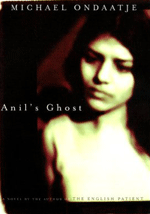 The story was told from the perspective of Anil Tissera, a Sri Lankan who spent the majority of her adult life abroad, a forensic anthropologist sent by the UN to investigate the possible role of the Sri Lankan government in the 20-year civil war. She was assisted by a local archeologist, Sarath. Together they tried to reconstruct the face and decode the formal life and death of a skeleton they nicknamed "Sailor". In the course of their investigation, Anil and Sarath encountered an assortment of unforgetable characters that had come to define the multifaceted shards of the broken life in a massive politically motivated genocide. It's been a week, yet this book has left such a enduring mark on my mind that I often found myself visualizing fragments from the book. I become intensely interested in Sri Lanka, a country previously I know very little about. I found a map of South Asia and saw that Sri Lanka is really in the middle of no where, just south of India, alone, shaped like a teardrop in the ocean, an emerald in the azure Bay of Bengal. In my naïve mind, I had always pictured the people of Sri Lanka, embodying the virtues of devoted Buddhists, live a quiet and peaceful life, tuned with the splendid nature around them. I did get a few glimpses of this serenity in Anil and Sarath's encounter with Sarath's teacher, the blind Paripana and his 12-year-old niece in an abandoned forest monastery, ironically though, as a way to recover the traumatizing shock of the niece after witnessing her own parents' murder. The tranquility was oddly similar to that of Spring Summer Fall Winter, and Spring by Ki-duk Kim, especially when the girl started preparing for Paripana's death by carving out his teachings alongside the river banks, so when the sun shines through the trees, the quiet river glistens with Paripani's words reflected on the surface of the water, for eternity to come.In most parts though, I saw just the opposite, blood, limps, heads, disappearance, mutilation, suffocation, and I could literally hear the scream in the make-shift hospitals when anesthesia runs out, which is almost all the time. Michael Ondaatje paints the unfathomable pain and fear people endure everyday in a sweeping motion, like a skillful artist with delicate and alluring touch to the detail, thus creating an impression of the chaos and fear that's powerfully blinding and astonishingly clear at the same time. I still get the chills recalling an incident when Anil and Sarath ran into a truck driver being crucifix-ed onto the road, his 18-wheeler parked in the middle of the road approaching a sharp turn. The truck' torch-like piercing headlights burning above him, he was pinned down and waiting hopelessly for death to consume him whole. Throughout the 20-year civil war, Sri Lanka was best symbolized as the giant Buddha that was blown to pieces as two thieves search fruitlessly for hidden treasure in its belly, as the story goes towards the end of the book. In the story, the artificer Ananda, reconstructs the broken Buddha piece by piece, and finally at 5AM (the hour of the enlightenment) paints the eyes, using a mirror for reflection so as not to look straight into Buddha*s eyes. A grand gesture, unfortunately too grand for any real life imitations. The tragedy in Sri Lanka, like that in Rwanda, Sudan, Argentina, and many others, did not receive the attention it so rightly deserved from all around the globe, including the UN. Like a single teardrop falling silently into the ocean, it's lost without a trace. Only in great literary works does it re-live all its formal glory and culminating tragedy. Shame.
The story was told from the perspective of Anil Tissera, a Sri Lankan who spent the majority of her adult life abroad, a forensic anthropologist sent by the UN to investigate the possible role of the Sri Lankan government in the 20-year civil war. She was assisted by a local archeologist, Sarath. Together they tried to reconstruct the face and decode the formal life and death of a skeleton they nicknamed "Sailor". In the course of their investigation, Anil and Sarath encountered an assortment of unforgetable characters that had come to define the multifaceted shards of the broken life in a massive politically motivated genocide. It's been a week, yet this book has left such a enduring mark on my mind that I often found myself visualizing fragments from the book. I become intensely interested in Sri Lanka, a country previously I know very little about. I found a map of South Asia and saw that Sri Lanka is really in the middle of no where, just south of India, alone, shaped like a teardrop in the ocean, an emerald in the azure Bay of Bengal. In my naïve mind, I had always pictured the people of Sri Lanka, embodying the virtues of devoted Buddhists, live a quiet and peaceful life, tuned with the splendid nature around them. I did get a few glimpses of this serenity in Anil and Sarath's encounter with Sarath's teacher, the blind Paripana and his 12-year-old niece in an abandoned forest monastery, ironically though, as a way to recover the traumatizing shock of the niece after witnessing her own parents' murder. The tranquility was oddly similar to that of Spring Summer Fall Winter, and Spring by Ki-duk Kim, especially when the girl started preparing for Paripana's death by carving out his teachings alongside the river banks, so when the sun shines through the trees, the quiet river glistens with Paripani's words reflected on the surface of the water, for eternity to come.In most parts though, I saw just the opposite, blood, limps, heads, disappearance, mutilation, suffocation, and I could literally hear the scream in the make-shift hospitals when anesthesia runs out, which is almost all the time. Michael Ondaatje paints the unfathomable pain and fear people endure everyday in a sweeping motion, like a skillful artist with delicate and alluring touch to the detail, thus creating an impression of the chaos and fear that's powerfully blinding and astonishingly clear at the same time. I still get the chills recalling an incident when Anil and Sarath ran into a truck driver being crucifix-ed onto the road, his 18-wheeler parked in the middle of the road approaching a sharp turn. The truck' torch-like piercing headlights burning above him, he was pinned down and waiting hopelessly for death to consume him whole. Throughout the 20-year civil war, Sri Lanka was best symbolized as the giant Buddha that was blown to pieces as two thieves search fruitlessly for hidden treasure in its belly, as the story goes towards the end of the book. In the story, the artificer Ananda, reconstructs the broken Buddha piece by piece, and finally at 5AM (the hour of the enlightenment) paints the eyes, using a mirror for reflection so as not to look straight into Buddha*s eyes. A grand gesture, unfortunately too grand for any real life imitations. The tragedy in Sri Lanka, like that in Rwanda, Sudan, Argentina, and many others, did not receive the attention it so rightly deserved from all around the globe, including the UN. Like a single teardrop falling silently into the ocean, it's lost without a trace. Only in great literary works does it re-live all its formal glory and culminating tragedy. Shame.Labels: books
Soft spots: Peacocks in street
I used to hate LA's sprawling landscape, where everything is spread so far apart, and the distance between point A and point B was always measured by time stuck on the freeways. It was after I started driving to different places regularly did I realize how important a GPS system is. Hindsight is always 20-20. I wish I didn't spend the extra money equipping my car with a moonroof that I never use, and a spoiler that looks like a hazard more than a decoration. During these trips out in places normally outside of my work and personal range, I discovered many famed restaurants, beautiful hills, Europe-style town plaza, hidden spot for viewing breathtaking sunset, and once in a blue moon, five peacocks patrolling a quiet street.Today I was on a quest to locate a book that's not available in any of the city and county library branches. Armed with the directions from Yahoo! Maps, I set out to find it in a city I've never heard of---this should give you an idea of how big LA really is. Unlike many other cities I usually travel to, this one was not right off or even near the freeway exit. I drove on the local streets for about 6 miles, and after a sharp turn, I arrived at the foot of a lush green hill, dotted with Spanish style homes with hipped roof, rounded doors and windows, and an occasional bell tower. The road winds up in a slow spiral path and I soon found myself deep in the the tranquility of a quaint village. The air was clean and crisp, with just a hint of the salty sea not far down the hill. Flowers bloomed and danced along the road.The library, located in a secluded garden, was very consistently designed and decorated with the same signature style that has come to define the town, modern on the inside but exuding an undeniable old-world charm. It was as if I had stepped into someone's century old home, tiled floor, heavy wood tables that was smoothed out by frequent rubbing, decorative iron railings, old, comfy leather couches that swallow you whole and fill your nostrils with the rich, leathery fragrance that's often associated with having coffee or hot tea over a great book. On my way back to the car, I took a detour from the back door of the library and gazed at the 4-layer fountain. When I turned around, I noticed two men stood about 30 feet from me. Normally I would not have paid any special attention except that the way their pose was very stiff and rigid, as if someone yelled "Freeze!" and they were caught in the middle of some act that wasn't supposed to happen. It piqued my interest instantly, so I inched forward toward them. I didn't know what was happening really but I knew something was not to be disturbed. As I got closer, I noticed the older gentleman was carrying a very professional looking camera around his neck as he spun around briefly to acknowledge me. I followed his gaze, and then I froze. A middle-aged guy in Hawaiian shorts and a white T-shirt was diligently washing a giant bright yellow truck parked in the driveway. He was so immersed in the task he didn't seem to notice three people were gathering in front of his lawn. Right behind the truck, partially hidden by its wheels, stood a peacock, unmistakably male due to its indigo blue neck and the extravagant fans of iridescent tail feathers folded behind his body. I blinked several times. I have never seen a peacock outside of the zoo before. The peacock was very much at ease, turning its small delicate head from side to side, glancing at us with an authoratative air. He was not impressed by the dumbfounded expressions on our face as we all fell prey to his beauty and grace. For a while, it was completely silent except for the slow running gurgling sound of the water hitting the truck's surface as we three stood there, stoned to the spot and gawked at the peacock. Finally another voice joined as the older gentleman held up his camera and snapped away. The peacock tolerated our fervent admiration for a little longer, turning its head this way and that, but was never compelled grace us with a full plumage. Then slowly he moved away with his magnificent train making a wide turn, and disappeared into the side door of the house. We started chatting with the proud yellow truck owner. It turns out that there are about 100 wild peacocks in this community, roaming around in streets and backyards. At night they rest on tall tree branches. They enjoy cookie crumbs, beans, and grew an acquired taste for potato chips. Many people have problems with them because of their distinct dissonant voice and that they raid the flowerbeds. I listened to this guy detailing the life of these beautiful pheasants as if they are common house pets, and found myself deeply jealous of these lucky people. Speaking of the plumage, the guy said, "Oh yes, they do that all the time. Not always for mating purposes though. Sometimes they just open up their tail to scare the predators."I'd love to stay and chat, but right then I saw two smaller peacocks crossing the street. I continued my detour down the road and followed them. They walked side by side, in a light jogging rhythm, like schoolgirls on their way home, chatting and looking around in the streets for interesting objects. After I got a bit closer, I noticed their feathers were not as brilliantly colored as the one I saw in the backyard---they turned out to be peahens, appearing much smaller due to the absence of the train. I stopped and just watched as they went away, making a side trip to another yard. Turning around, the most unbelievable thing happened right in front of my eyes. There, two male peacocks were actually following me. Well that's my first thought, because seeing me facing them, they did not break their pace, pause or back away, instead they kept strutting away, in the directions of the two peahens. I was further assured of that after hearing the response calls made by the peahens when the two peacocks broke into a frenzy (bird) call as they passed me by. They probably warned their girlfriends to look out for weird ones like me.It was by far the most interesting, almost borders on surreal experience I've had driving in the unknown land masquerade under the common name LA. I can only imagine the peacocks in that secluded, beautiful town, fly across the rooftop against the sunset, flocking together in bands, and covering the trees with their splendid plumage.
Books: Name and Sex
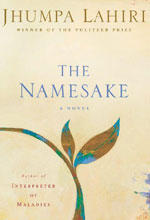
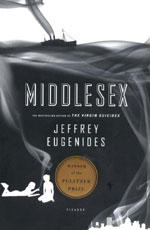 Our names and our sex, two things most of us have no control over and therefore take granted for very easily. The main characters of Namesake and Middlesex spent the better part of their lives struggling to come to terms with their name and gender. Both novels are about immigrant families and their heart staggering experience of assimilation to the Melting Pot.I picked up Namesake because of the Pulitzer-winning short story collection The Interpreters of Maladies also by Jhumpa Lahiri. I was not disappointed, that is to say, I am not too impressed either. I enjoyed her poignancy and mastery of emotional details in Mrs. Sen, A Temporary Matter and A Blessed House. As far as I could tell, Namesake was a drawn-out, over-stretched long haul of all of the stories in Interpreters of Maladies, both on style and content aspects. Unfortunately, the effort is a bit diluted like a cup of tea being refilled one too many times. Nonetheless, it was a great read and on an emotional level, I could really relate to many experiences of Ashima and Ashock, even with Gogol as he tries to cling onto an All-American family that stood for everything he is not coming from a first generation Indian (Bengali) family. Furthermore, I appreciate Lahiri's almost onlooker stance, moving in and out of the two generations of characters¡¯ lives, with subtle shifts in perspectives¡ªI never get the feeling that she was outside of the story.The perceptive, breezy style dotted with light sentimentalism of Namesake was completely devoid in Middlesex. The prose was immediately more volatile, full of passion and unexpected humor, like a train crashing in at full speed. Definitely one of the best books I've read this year¡It is after reading Middlesex, I came to the real understanding of "sex is biological, but gender is social" that seems to be plastered all over the wall at PFLAG meetings in school. Story, character development and the historical backdrop that encompasses 80 years of the 20th century, a perfect blend for a bestseller kind of novel. I wish I know more about the Greek mythologies to better appreciate the jokes and references to various Gods and Goddesses. The last part when Milton hallucinates as he and the Cadillac plunged head first into the river brought me to tears. I have never read a death that's so imaginative, so heartbreakingly sad, yet so full of live. Many other memorable scenes left impressionable marks, Desdemonda and Lefty¡¯s life in Turkey in the early 1920s, raising silkworms---didn¡¯t that bring back fond memories¡ their trip to the America and the immigration experiences restaged on Ellis Island, so eerily resembling of what I read when I visited the Statue of Liberty and the Ellis Island museum.
Our names and our sex, two things most of us have no control over and therefore take granted for very easily. The main characters of Namesake and Middlesex spent the better part of their lives struggling to come to terms with their name and gender. Both novels are about immigrant families and their heart staggering experience of assimilation to the Melting Pot.I picked up Namesake because of the Pulitzer-winning short story collection The Interpreters of Maladies also by Jhumpa Lahiri. I was not disappointed, that is to say, I am not too impressed either. I enjoyed her poignancy and mastery of emotional details in Mrs. Sen, A Temporary Matter and A Blessed House. As far as I could tell, Namesake was a drawn-out, over-stretched long haul of all of the stories in Interpreters of Maladies, both on style and content aspects. Unfortunately, the effort is a bit diluted like a cup of tea being refilled one too many times. Nonetheless, it was a great read and on an emotional level, I could really relate to many experiences of Ashima and Ashock, even with Gogol as he tries to cling onto an All-American family that stood for everything he is not coming from a first generation Indian (Bengali) family. Furthermore, I appreciate Lahiri's almost onlooker stance, moving in and out of the two generations of characters¡¯ lives, with subtle shifts in perspectives¡ªI never get the feeling that she was outside of the story.The perceptive, breezy style dotted with light sentimentalism of Namesake was completely devoid in Middlesex. The prose was immediately more volatile, full of passion and unexpected humor, like a train crashing in at full speed. Definitely one of the best books I've read this year¡It is after reading Middlesex, I came to the real understanding of "sex is biological, but gender is social" that seems to be plastered all over the wall at PFLAG meetings in school. Story, character development and the historical backdrop that encompasses 80 years of the 20th century, a perfect blend for a bestseller kind of novel. I wish I know more about the Greek mythologies to better appreciate the jokes and references to various Gods and Goddesses. The last part when Milton hallucinates as he and the Cadillac plunged head first into the river brought me to tears. I have never read a death that's so imaginative, so heartbreakingly sad, yet so full of live. Many other memorable scenes left impressionable marks, Desdemonda and Lefty¡¯s life in Turkey in the early 1920s, raising silkworms---didn¡¯t that bring back fond memories¡ their trip to the America and the immigration experiences restaged on Ellis Island, so eerily resembling of what I read when I visited the Statue of Liberty and the Ellis Island museum.Labels: books
Books: I am Charlotte Simmons
By Tom WolfLet me expound on this a bit. Really the essence of all the college peer pressure summed up:"What was it, this implacable remoteness, this inability to surrender herself to the warmth and comradely feelings of others? Could being an academic star, being applauded over and over again as a prodigy, take the place of all that? She shuddered with a feeling she couldn't have put a name to. It was the congenital human fear of isolation."Labels: books
Into thin air: 千里纵横,穿越大峡谷--.谷底到南壁
Into thin air: 千里纵横,穿越大峡谷--.北壁到谷底
NORTH KAIBAB TRAIL TO PHANTOM RANCH
Elevation change: 5700 feet0 miles: North Kaibab Trailhead4.75 miles: Roaring Springs6.5 miles: Cottonwood Campground14.5 miles: Phantom RanchStarting time: 9 AMFinishing time: 4:30 PM红色为我们所走的路线: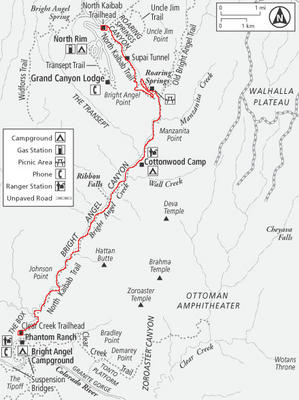 Trail map from http://www.frommers.com/destinations/grandcanyonnationalpark/North Rim的Visitor Center 还沐浴在晨曦中,显得那么的安静祥和。我们把车停在Trail Head的停车场,检查了一下背包, 穿过一条小马路就到了North Kaibab的路口。
Trail map from http://www.frommers.com/destinations/grandcanyonnationalpark/North Rim的Visitor Center 还沐浴在晨曦中,显得那么的安静祥和。我们把车停在Trail Head的停车场,检查了一下背包, 穿过一条小马路就到了North Kaibab的路口。 大 峡谷两岸北壁比南壁高1100英尺,所以风光各有不同。北壁没有南壁那么多人,每年因为天气原因也只开放5个月的时间。峡谷景观多为直上直下的岩壁,其间 有很多大树,雄奇壮观。缺点是景点分散,而且Trail很长,不太适合到此一游的玩法。我们之所以选择第一天走北壁的North Kaibab Trail 14.5mile下坡,是因为北壁的路虽然长了点,但毕竟是走下坡比较容易,加上北壁气温低,沿路有树荫,小溪,瀑布,会比较好走.
大 峡谷两岸北壁比南壁高1100英尺,所以风光各有不同。北壁没有南壁那么多人,每年因为天气原因也只开放5个月的时间。峡谷景观多为直上直下的岩壁,其间 有很多大树,雄奇壮观。缺点是景点分散,而且Trail很长,不太适合到此一游的玩法。我们之所以选择第一天走北壁的North Kaibab Trail 14.5mile下坡,是因为北壁的路虽然长了点,但毕竟是走下坡比较容易,加上北壁气温低,沿路有树荫,小溪,瀑布,会比较好走. 最 开始到roaring springs的感觉就像在森林里漫步,满眼的青松和鬼斧神工的橘色峭壁。位于8801英尺的北壁因为海拔高, 空气非常清新. 在高耸如天的峭壁旁, 走在前面山路上的人看起来是那么的渺小。我把自己想像成神话故事里在fantasyland的寻宝者,只觉得有看不完的惊喜,不知不觉之间,睡眠不足的疲 劳也都消失了。走到 3mile的时候,忽然下起了小雨,大峡谷在雨水的清洗中显得绿得更翠,红得愈烈。一会儿小雨转成大雨, 还伴随着有雷声. 我们的衣服裤子虽然号称是防水的,但还是对付不了暴雨, 索性找了快突出的岩壁休息一下顺便等雨停。
最 开始到roaring springs的感觉就像在森林里漫步,满眼的青松和鬼斧神工的橘色峭壁。位于8801英尺的北壁因为海拔高, 空气非常清新. 在高耸如天的峭壁旁, 走在前面山路上的人看起来是那么的渺小。我把自己想像成神话故事里在fantasyland的寻宝者,只觉得有看不完的惊喜,不知不觉之间,睡眠不足的疲 劳也都消失了。走到 3mile的时候,忽然下起了小雨,大峡谷在雨水的清洗中显得绿得更翠,红得愈烈。一会儿小雨转成大雨, 还伴随着有雷声. 我们的衣服裤子虽然号称是防水的,但还是对付不了暴雨, 索性找了快突出的岩壁休息一下顺便等雨停。 十 二点的时候到达了Cottonwood Campground,我们找了一个没人的campsite,就坐下来吃饭。之前在Visitor Center的信息栏上看到,山路走久了休息的时候应该把脚放平,这样体力会恢复得比较快。我吃了一个三明治,又换了双袜子. 重新调了一瓶运动饮料在12:45我们就继续前进了。剩下的这7.5英里都是沿着Bright Angels Creek的环山而行。随着海拔的降低, 地貌也慢慢得变得不同。葱郁的松树渐渐的被有着暗色树叶的小树丛和那一丛丛的像紫色郁金香的仙人掌所取代。下午的太阳越来越大了,我们也开始感到了疲劳, 话越来越少,K比我走得快,一会儿就把我落在后面。慢慢的,我发现自己一个人在走着,一圈一圈的绕着山路, 几个小时内都没有看见过别人。山谷两边的景色还是那么的雄奇,可是一路看来,也不像早上那么兴奋。更糟糕的是,我开始注意到脚上的不适。这次我最大的失误 是穿了一双新鞋来登山。这双鞋K穿着爬过很多山, 他向我推荐了很多次,所以上个星期North Face降价的时候我便买了回来。这是一双防水的Trail Runner. 按说应该是适合距离短一点或者比较平坦的山路。大峡谷的这条路不仅长,一路上还有沙地,有碎石,还有几除需要手脚并用的很陡的大石。这双鞋是低帮,所以对 脚踝的支持不够, 很容易在碎石或者枕不高低不平的地方扭到脚. 另外跑鞋为了减重,鞋底不像一般的登山靴那么硬。走到坚硬的石头上,鞋底的薄让我感受到了每一步脚下的石头的形状和锋利程度。
十 二点的时候到达了Cottonwood Campground,我们找了一个没人的campsite,就坐下来吃饭。之前在Visitor Center的信息栏上看到,山路走久了休息的时候应该把脚放平,这样体力会恢复得比较快。我吃了一个三明治,又换了双袜子. 重新调了一瓶运动饮料在12:45我们就继续前进了。剩下的这7.5英里都是沿着Bright Angels Creek的环山而行。随着海拔的降低, 地貌也慢慢得变得不同。葱郁的松树渐渐的被有着暗色树叶的小树丛和那一丛丛的像紫色郁金香的仙人掌所取代。下午的太阳越来越大了,我们也开始感到了疲劳, 话越来越少,K比我走得快,一会儿就把我落在后面。慢慢的,我发现自己一个人在走着,一圈一圈的绕着山路, 几个小时内都没有看见过别人。山谷两边的景色还是那么的雄奇,可是一路看来,也不像早上那么兴奋。更糟糕的是,我开始注意到脚上的不适。这次我最大的失误 是穿了一双新鞋来登山。这双鞋K穿着爬过很多山, 他向我推荐了很多次,所以上个星期North Face降价的时候我便买了回来。这是一双防水的Trail Runner. 按说应该是适合距离短一点或者比较平坦的山路。大峡谷的这条路不仅长,一路上还有沙地,有碎石,还有几除需要手脚并用的很陡的大石。这双鞋是低帮,所以对 脚踝的支持不够, 很容易在碎石或者枕不高低不平的地方扭到脚. 另外跑鞋为了减重,鞋底不像一般的登山靴那么硬。走到坚硬的石头上,鞋底的薄让我感受到了每一步脚下的石头的形状和锋利程度。 最 后两个小时的路上,我脚痛休息比较频繁,走得也越来越慢。也不知道走了多久,绕过一块巨岩,我忽然看见K就在前面不远的一座桥上和几个人交谈。他看见我走 得近了,冲我喊了一句,“快到了!” 我心想肯定是骗我想让我快跟上,我才不信。当我哼哧哼哧得走到那座桥的时候,我忽然意识到和K说话的那几个人,没有一个人带着背包,而且穿的是球鞋,每个 人手上只拿了一瓶水!!! 其中一个看上去像是印度人的男生对我说,还有20分钟就到campground了,我们就是从那边走过来的。 我简直不敢相信--终于快到了! 然后就像电影Pleasantville里那样,我眼前这些两小时来看到麻木的岩石和仙人掌忽然从灰暗变成了彩色,嘈杂的小溪流在我的耳朵里听起来也悦耳 起来,脚好像也不是那么疼了。那种感觉就像忽然打了一支强心剂。最后20分钟不用说,是我这一趟走得最开心最信心百倍的一段。
最 后两个小时的路上,我脚痛休息比较频繁,走得也越来越慢。也不知道走了多久,绕过一块巨岩,我忽然看见K就在前面不远的一座桥上和几个人交谈。他看见我走 得近了,冲我喊了一句,“快到了!” 我心想肯定是骗我想让我快跟上,我才不信。当我哼哧哼哧得走到那座桥的时候,我忽然意识到和K说话的那几个人,没有一个人带着背包,而且穿的是球鞋,每个 人手上只拿了一瓶水!!! 其中一个看上去像是印度人的男生对我说,还有20分钟就到campground了,我们就是从那边走过来的。 我简直不敢相信--终于快到了! 然后就像电影Pleasantville里那样,我眼前这些两小时来看到麻木的岩石和仙人掌忽然从灰暗变成了彩色,嘈杂的小溪流在我的耳朵里听起来也悦耳 起来,脚好像也不是那么疼了。那种感觉就像忽然打了一支强心剂。最后20分钟不用说,是我这一趟走得最开心最信心百倍的一段。
 幽 灵山庄有两种形式的住宿. 一种是男女分开的房间, 每间里有十张单人床,还有公用的卫生间洗澡室。另外一种是两个人住的酒店式的房间。我们订到的是宿舍型的两张床,正好K的宿舍就在我的宿舍旁边。 Check-in之后我就一头倒在床上,感受着风扇的清风, 闻着干净床单枕头上洗衣粉的味道,实在是太舒服了!!洗完澡之后我们到餐厅吃饭。晚饭是Family style,十几个人围坐在一张大木桌旁,菜都是用桶和巨大的碗盛装,每个人拿完自己那一份就递给手边的下一个人。晚上的菜式有沙拉,土豆牛肉Stew, 玉米面包,甜点是一块巨大的巧克力蛋糕。都是很普通的菜,但是对于走了一天的我们来说,能够不用自己生火煮饭,或者吃压到变形的冷三明治, 这些香喷喷热乎乎的肉汤和巧克力蛋糕已经是最大的享受了。吃晚饭后我们约定好早上两点在餐厅门口碰面出发, 就各自回宿舍睡觉了。
幽 灵山庄有两种形式的住宿. 一种是男女分开的房间, 每间里有十张单人床,还有公用的卫生间洗澡室。另外一种是两个人住的酒店式的房间。我们订到的是宿舍型的两张床,正好K的宿舍就在我的宿舍旁边。 Check-in之后我就一头倒在床上,感受着风扇的清风, 闻着干净床单枕头上洗衣粉的味道,实在是太舒服了!!洗完澡之后我们到餐厅吃饭。晚饭是Family style,十几个人围坐在一张大木桌旁,菜都是用桶和巨大的碗盛装,每个人拿完自己那一份就递给手边的下一个人。晚上的菜式有沙拉,土豆牛肉Stew, 玉米面包,甜点是一块巨大的巧克力蛋糕。都是很普通的菜,但是对于走了一天的我们来说,能够不用自己生火煮饭,或者吃压到变形的冷三明治, 这些香喷喷热乎乎的肉汤和巧克力蛋糕已经是最大的享受了。吃晚饭后我们约定好早上两点在餐厅门口碰面出发, 就各自回宿舍睡觉了。
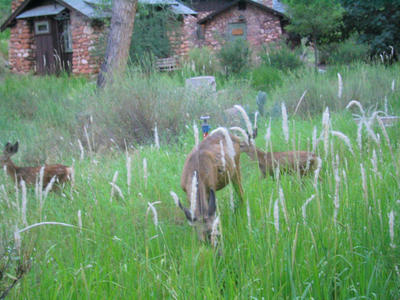
Into thin air: 千里纵横,穿越大峡谷--连夜赶路
9月2日星期五:还沉浸在终于定到了幽灵山庄的喜悦中,我把东西全装到车上,开去机场。去洛杉矶机场这条路,平时就堵得厉害,今天是劳动节前的星期五,更加水泄不通。一步一停的捱到机场,结果飞机又晚点。最后终于在10:00上了往东的高速。开车路线:I-10EastàI-605East->I-210North->I-15->UT-9->UT59->AZ389->US89总行车距离:567英里时间:10小时途径州:CA, NV, UT, AZ重要城市/景点:Los Angeles, Las Vegas, Zion National Park, North Rim, South Rim这 一路走来没什么可圈可点的。一个人开车一个人睡觉。但是睡眠质量很差, 估计合眼的时间不超过3小时。早上一看,两个人都是黑眼圈。五点多的时候开上9号公路进入了锡安国家公园,一路上山路崎岖,天色灰黯。快七点的时候到达离 大峡谷北壁最近的一个城市,Jacob Lake. 停下来吃了一顿早饭,虽然没什么胃口,但是这一天的运动量相当大,一定要多吃才能坚持下来。鸡蛋,熏肉,香肠,吐司,pancakes,反正 塞了一肚子。狠狠得喝了三杯咖啡后两只熊猫又上车出发了。
Into thin air: 千里纵横,穿越大峡谷--准备篇
Labor Day去大峡谷是最后一分钟做的决定, 更确切地说是走前一个星期。 我和K其时两地分居,比平时更想过一个有意义的长周末,是我去旧金山呢还是他来洛杉矶?想来想去都觉得不妥,但是两个人都想去个远点的地方,最好是有点历 险的意思。我想起前几个月的National Geographic Adventure上提过的一条Grand Canyon的Epic Trek横穿大峡谷,颇为神往。又了解到大峡谷每年虽然有四百万到五百万的游客慕名前来,可是只有百分之一的人会去登山(hiking)。我们合计了一下 就这样定了-- 我们要在今年的劳动节做那百分之一.Highlights:
- 行走距离: 24 miles in 17 hours
- 行车距离: 1212 miles
- 最美味的一顿饭: 幽灵山庄的5000-calory dinner
- 最好喝的冰啤酒: bright angels lodge的samuel adams
- 最有用的一件gear: moleskin
- 最surreal的一段山路: 除了我们自己, 从cottonwood camp到幽灵山庄的前6 miles一个人都没碰到
- 最痛苦的经历: 新鞋没有broken in, 脚被磨出了三个大水泡
[行程]接下来就是马不停蹄的research. 需要知道的是路况,水源,时间,还有不同时段的气温。最好的网上resources是 http://www.kaibab.org/ 和大峡谷的主页。对我来说http://www.kaibab.org/的 最大的好处是可以读到别人的Trip Reports。Trip report 是仁者见仁, 因为每个人的身体状况不同,trail的难度没有一个标准。但是对了解一下之前同时期的天气状况很有帮助。 至于地图和其他的信息,没有什么书店比REI更全的了。 麻烦的是我们只有一辆车,从一边下另一边上都有怎么才能回到停车场的问题。查了一下rim-to-rim shuttle, Transcanyon Shuttle每天只有一班,北边是早上7点开车,南边是下午一点半。最后考虑了整个假期的长度和路上开车的时间,我们最后 的行程是这样安排的:1. 星期五晚上从洛杉矶出发,开车到大峡谷North Rim. 行车距离500英里2. 星期六早上从北边走North Kaibab Trail 到谷底. 长度14英里3. 星期六晚宿Phantom Ranch 或者Bright Angels Campground4. 星期天凌晨开始从Phantom Ranch走Bright Angels Trail到South Rim。 长度9.8英里5. 星期天下午一点坐shuttle于傍晚到达North Rim停车场。行车距离212英里6. 星期天晚上赶回洛杉矶。行车距离500英里[住宿]路 线行程安排好了,就该定住的地方了。说起住宿真是颇多波折.大峡谷是一个非常popular的景点,尤其是南边, 一年四季都开放, rim 和 谷底的住宿一般很快就定完了。我们唯一的希望就是same-day permit或者last-minute cancellation. 最理想的状况是住Phantom Ranch, 因为这样就不用带睡袋, 帐篷, 晚餐, 背包会轻很多, 更适合我们这种疯狂赶路的行程. 幽灵山庄到底有多畅销呢? 它的自动voice message报告说reservation最好是在23个月之前就定而现在reservation已经订到了2007年的一月. 星期二我打了第一次电话, 接线员告诉我labor day weekend 已经全部订满. 可能听出了我声音中的惋惜, 挂电话之前她好心的提醒了一句, 星期五七点的时候再打一次电话看有没有可能wait list. 这就是我的救命稻草了.如果不能住幽 灵山庄那试试能不能拿到permit搭帐篷好了. 我在网上和旅游介绍中读到Backcountry information office会有少量的same day permit. 我兴冲冲得一个电话打过去,接电话的是一个不开玩笑一规一距的老太太.她很严厉得告诉我如果我们是从北边下到谷底,她绝不会给我们same day permit. 因为North Kaibab太长太累, 九月初的气温也很高,她不相信我们一天能到谷底. 我在电话里自然不能和她拍胸脯说我们俩一天走14英里的下坡路其实不是很大的问题, 只能唯唯诺诺一把.老太太应该是刀子嘴豆腐心的那一型吧. 她很坦诚地说,我现在手上有7个星期天的permits,如果你答应我不在到达的当天就开始走North Kaibab Trail, 只要你能8点钟到North Rim Backcountry Information Office, 我保证这其中两个是你的. 我还是把名字和电话留给她了. 可是如果这样安排的话, 我们的行程就要整个往后延一天, 实在是下下策.星期五整个下午我就等7点的到 来, 越等越心焦, 到三点的时候我忍不住了, 给幽灵山庄的reservation打了电话. 我简直不能相信自己的好运, 居然临时有人cancel正好剩出了两张dorm beds一男一女. 接线员也觉得不可思议, 连连说, “Your timing is perfect! Those were the last two.” 我又订了两个stew dinner. 哈哈,这下我们有吃有住还能洗热水澡还有干净的被单枕头… 太完美了!!![装备]这此我们虽然要在谷底睡一晚上, 但是因为是住lodge所以并不是真正意义上的backpacking, 准确得说是两个day hike. 因为帐篷, 睡袋, sleeping pads, 锅碗瓢盆一律都没带, 一个3000 cubic inch的day pack就够了。九月初是大峡谷的monsoon season的尾巴, rim一带还是会有可能有雷阵雨, 我们准备了防水的外套, 裤子和鞋子. 里面一层是coolmax的短袖上衣方便排汗.长时间走路脚出汗容易磨出水泡, 登山袜每个人带了三双.其他的物品:登山杖,帽子,头灯,墨镜,防晒霜,净水器(后来证明是多余的),地图,insect repellent, 小瓶装的洗漱用品,药品(止疼片,创可贴,neosporin,moleskin等等)[食物] 一人份Togo’s sandwich 三个(这辈子不想再吃他家的三明治了),energy bar 五个苹果:两个牛肉干:一袋Gaterade powder mix and other electrolyte drink mixes: 3包水:3 升(此外沿路都有饮用水)这些都是在路上吃的。星期六晚上在幽灵山庄吃了一顿丰富可口的stew dinner,次出先按下不表。

















